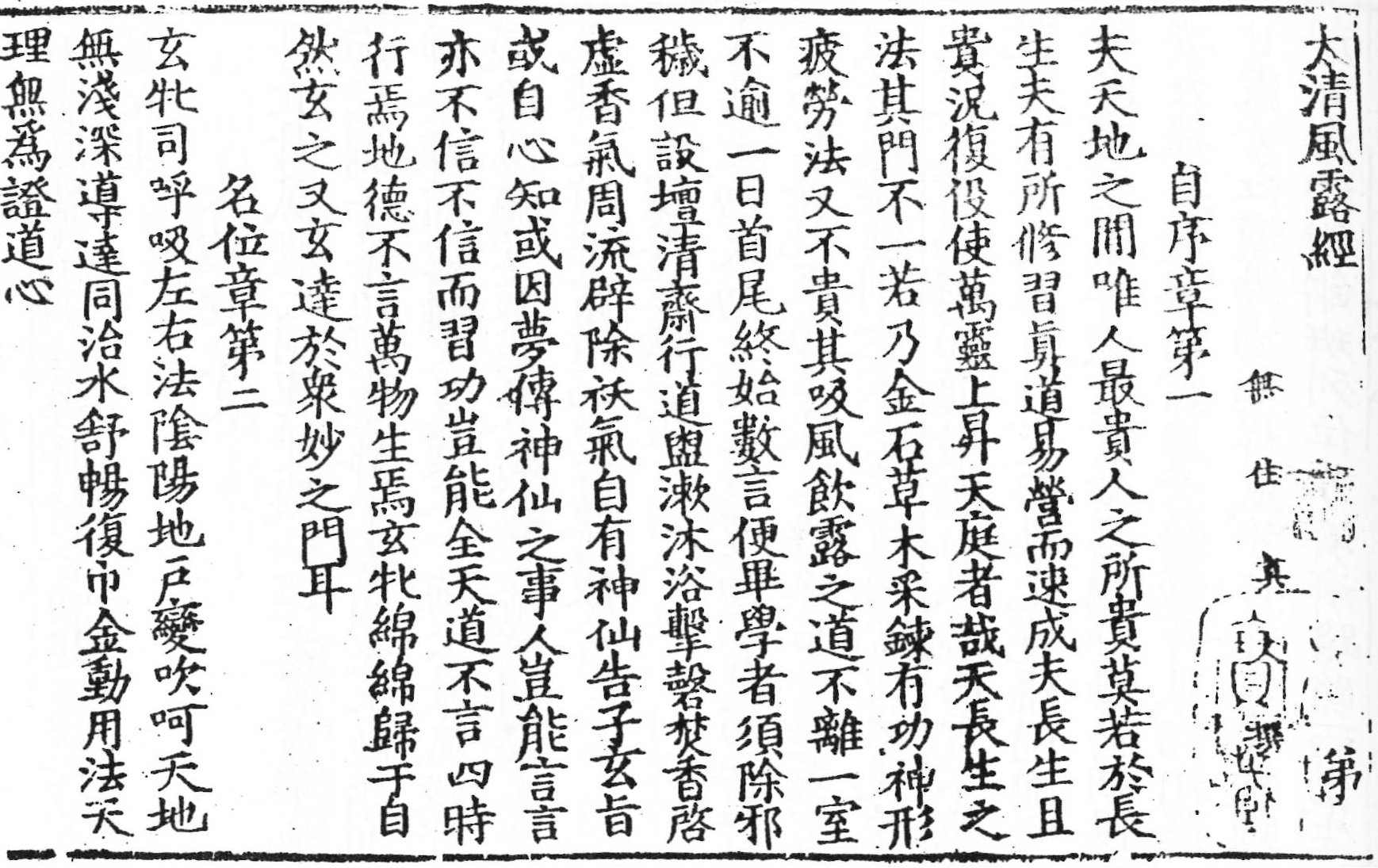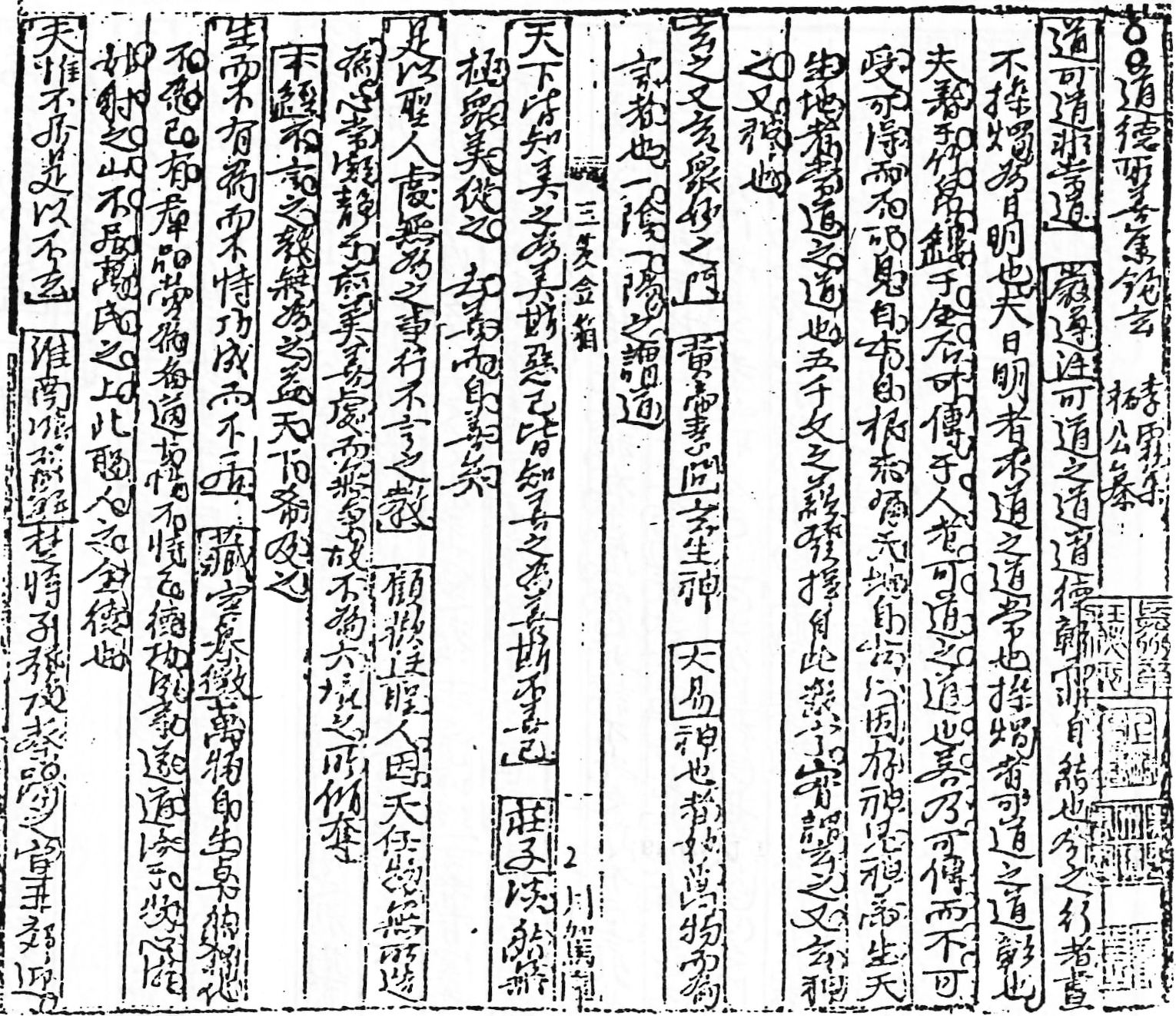The collection Zangwai daoshu 藏外道書 presents texts not included in the traditional Daoist Canon (Zhengtong) Daozang (正統)道藏 and the supplement (Wanli) Xu daozang (萬曆) 續道藏 from the Ming period 明 (1368-1644). It was published in 1994 by the Ba-Shu Shushe 巴蜀書社 in an edition of 36 volumes. The leader of the compilation group was Tang Yijie 湯一介 (1927-2014).
Among the texts included are quite a few rare copies, e.g. Taiqing fenglu jing 太清風露經, Tiangang xuanbi dulei fa 天罡玄祕都雷法, Dacheng jinshu 大成金書 or Yuji jinxiang 玉笈金箱. The copy of the Taiqing fenglu jing owned by the Beijing Library (Beijing Tushuguan 北京圖書館), for instance, is the only surviving (guben 孤本) copy of a Yuan-period 元 (1279-1368) edition of the Daozang. It is mentioned in the catalogue Daozaong quejing mulu 道藏闕經目錄 and was already lost during the Ming period.
 |
The early Han-period 漢 (206 BCE-220 CE) tomb library of Mawangdui 馬王堆 included two early editions of the Laozi Daodejing 老子道德經 (in an inverted version as Laozi Dedaojing 老子德道經) which deviate from the transmitted version. Apart from that, Mawangdui brought to light texts of the Huang-Lao belief 黃老 flourishing during the Warring States 戰國 (5th cent.-221 BCE) and the Han period.
The collection Zangwai daoshu includes important, widespread texts compiled after the Ming period, as for instance, Liu Yiming's 劉一明 (1734-1821) Daoshu shi'er zhong 道書十二種, with (more than) a dozen of texts of the Longmen School 龍門派 of the Quanzhen Tradition 全真 or Min Xiaogen's 閔小艮 (1758-1836) series Gushu yinlou cangshu 古書隱樓叢書. Another group of books originated in texts only circulating in temples or within Daoist communities, like Zhou Side's 周思德 Longshan text Shangqing lingbao jidu dacheng jinshu 上清靈寶濟度大成金書. This text only exists in two copies, one of which owned by Princeton University, and the other by the National Central Library (Taibei Zhongyang Tushuguan 臺北中央圖書館). The liturgical text Guangcheng yizhi 廣成儀制 was only owned by a temple of Qingcheng Mountain 青城山 in Sichuan.
A fourth group of books in the Zangwai daoshu are local gazetteers on Daoist institutions and places, like Longhushan zhi 龍虎山志, Maoshan quanzhi 茅山全志, Huayu zhi 華嶽志, or Gezaoshan zhi 閤皂山志. The Zangwai daoshu also includes literary texts like the fragmentary collection of poems Daojia shiji 道家詩紀 or novellas and theatre plays. The fifth group of texts is widely circulating books on inner alchemy or the prolongation of life like Wu Shouyang's 伍守陽 (1573-1644) Tianxian zhengli zhisong 天仙正理直訟 and Xian-Fo hezong yulu 仙佛合宗語錄, Liu Huayang's 柳華陽 (b. 1736) Jinxian lunzheng 金仙論證 and Xingming guizhi 性命圭旨 or Qian Xiyan's 錢希言 rare book Yuji jinxiang. The series also includes important Daoist books from the Republican period.
 |
The arrangement of the books does not follow the categories of the "Three Caverns" and "Four Auxiliaries" (sandong sifu 三洞四輔) of the Daozang which classified books more or less according to religious strands, but divides texts according to content.
| 1 | 古佚道書類 | Guyi daoshu | Ancient lost (and rediscovered) texts |
| 2 | 經典類 | Jingdian | Canonic texts |
| 3 | 教理教義類 | Jiaoli jiaoyi | Instructions |
| 4 | 攝養類 | Sheyang | Physical practice |
| 5 | 戒律善書類 | Jielü shanshu | Fasting and rules |
| 6 | 儀範類 | Yifan | Liturgy |
| 7 | 傳記神仙類 | Zhuanji shenxian | Biographies |
| 8 | 宮觀地志類 | Gongguan dizhi | Local gazetteers |
| 9 | 文藝類 | Wenyi | Literature |
| 10 | 目錄類 | Mulu | Catalogues |
| 11 | 其他 | Qita | Others |